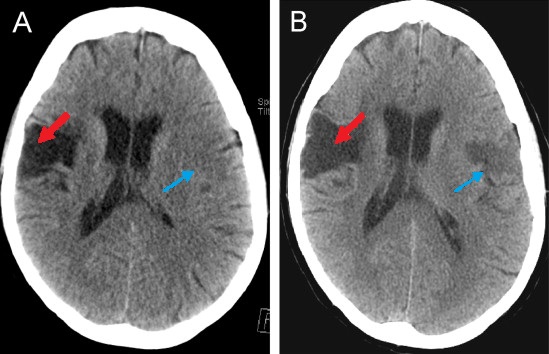Playlist
Show Playlist
Hide Playlist
Clinical Question: tPA or Endovascular Therapy?
-
Slides Management of Acute Ischemic Stroke.pdf
-
Download Lecture Overview
00:00 The second major question that we ask is "Is this patient a candidate for tPA or endovascular therapy?" If the patient is presented within the appropriate window of time and time is brain and we've diagnosed this condition a stroke, we want to know whether we can intervene with tPA intravenously or endovascular therapy through an intervention or surgical procedure. When we think about this, what's so important is determining the time that the patient was last normal, when the onset of the symptoms were. When we're talking with patients and looking at a clinical vignette, many times we first think about well when did the symptoms begin. But for stroke, that's not good enough. We've got to define the last known normal. Last known normal as you see here is the time prior to hospital arrival at which the patient was last known and seen to be without the signs and symptoms of the current stroke or when the patient was at his/her baseline of health. So if the patient woke up with stroke symptoms, then the timeline of onset at the time of onset is not when the patient woke up. It's last night at the time when someone last saw the patient. That's the last known normal. And for stroke patients, we don't know when the stroke occurred between when they were last seen normal and when the symptoms were first recognized. 01:22 If we intervene too late in the stroke when that vasogenic edema or ionic edema or necrosis has occurred, we can increase the risk of hemorrhagic transformation. So we're really looking to define those patients who are presenting early within the first few hours from when they were last known normal. So how do we think about the types of acute interventions that we can administer and the time of presentation for the patient? Well here, we're going to divide up the time from last known normal. Patients who have presented within 0 to 4-1/2 hours of last being normal with any stroke type who do not have evidence of a hemorrhage on a CT are candidates for intervention. And we would consider IV tPA, that's intravenous administration of tissue plasminogen activator, a clot-busting medicine; or intra-arterial thrombectomy, a mechanical procedure to pull out that blood clot. And that's for patients who are presenting early after they were last known to be normal with an ischemic stroke. For patients who present in that 4.5 to 6-hour range particularly those who have large NIH stroke scores, and we'll talk about the NIH stroke scale, but here an NIH stroke scale of greater than 6 are sufficient size of stroke who don't have evidence of hemorrhage on a non-contrast head CT and who may have areas of abnormality on perfusion. 02:50 Those are areas where we can see that penumbra tissue. There is an infarcted core but it looks to be a larger area of at risk on perfusion imaging. In those patients, we would also consider intervention and we may consider IV tPA or may also consider thrombectomy, but given the features in clinical situation for the patient. And then for patients presenting late after they were last known to be normal in that 6- or 24-hour range, we would consider intervention for those with large stroke scale scores who have no evidence of hemorrhage on the CT with or without perfusion abnormalities and those patients may be considered for intra-arterial thrombectomy. At that point in time using intravenous tissue plasminogen activator, IV tPA, increases the risk of hemorrhagic transformation. These general rules are being changed all the time with later studies and new data, but in general we're looking to intervene as soon as possible after the patient was last normal. We typically think about IV tPA in those early presentations and sometimes we'll add thrombectomy to it. And we want to do the treatment that will bust up that clot and open the artery.
About the Lecture
The lecture Clinical Question: tPA or Endovascular Therapy? by Roy Strowd, MD is from the course Stroke and Intracranial Hemorrhage.
Included Quiz Questions
What question regarding stroke symptoms determines whether or not a patient is a candidate for tPA or thrombectomy?
- What time was the last known "normal" (or baseline) without symptoms of stroke?
- What time did the onset of stroke symptoms occur?
- What time did the patient last eat anything?
- What time did the motor weakness start?
- What time did the aphasia begin?
For patients who present 12 hours after the last known absence of stroke symptoms, what is the most aggressive treatment option that can be offered?
- Thrombectomy
- Thrombolytic therapy with tPA
- Endarterectomy
- Anticoagulation
- Physical therapy
Customer reviews
5,0 of 5 stars
| 5 Stars |
|
5 |
| 4 Stars |
|
0 |
| 3 Stars |
|
0 |
| 2 Stars |
|
0 |
| 1 Star |
|
0 |




